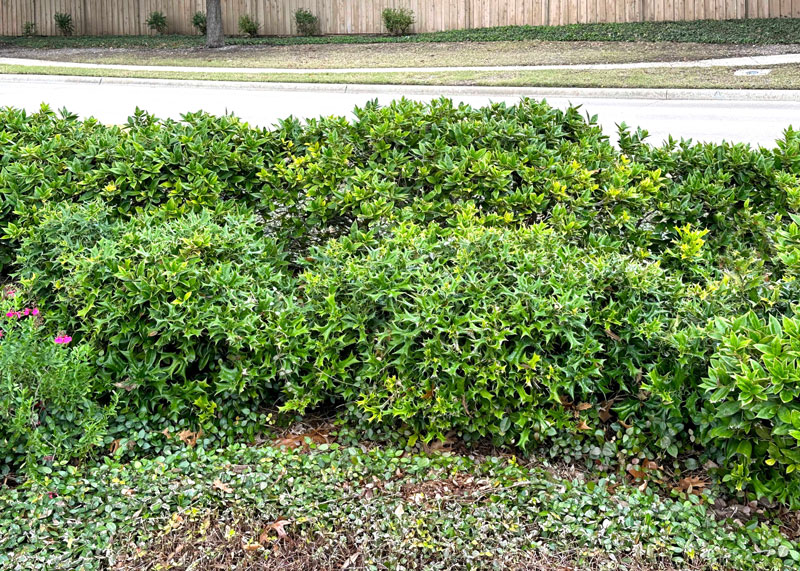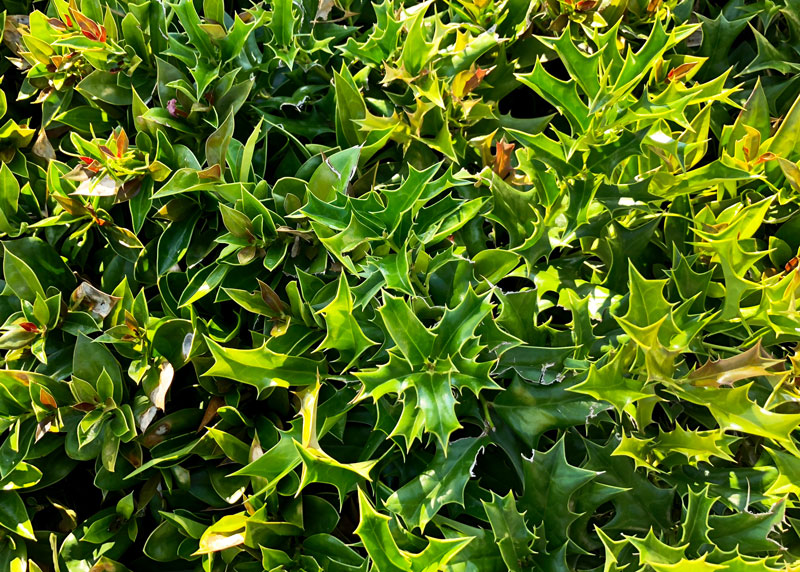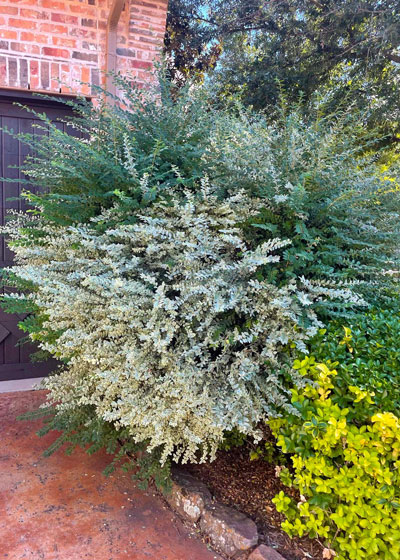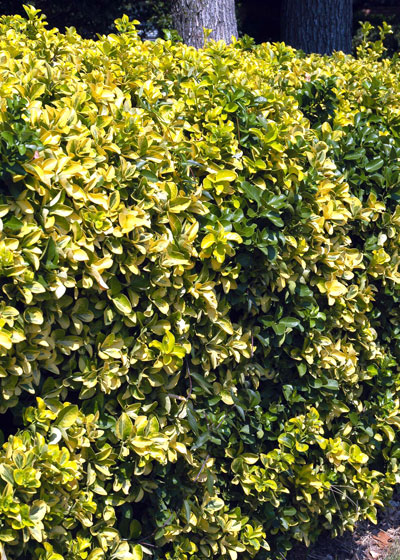A Reversal of Fortunes

Sometimes you order a burger and fries in the drive-through and you drive off with grilled chicken and a fruit cup. The grandson isn’t pleased. You didn’t get what you ordered.
It happens in horticulture as well. Some plant selections aren’t of stable varieties and they soon make it known.
While I was admiring the autumn sage this past Sunday (see story this issue), I noticed a Carissa holly that had gone off the tracks.

This certainly isn’t the first time that I’ve seen a Carissa holly revert to its dwarf Chinese “roots.” In his great book Hollies, the late (and really great!) Fred Galle listed Carissa as having been found as a bud mutation in Wight Wholesale Nursery’s plantings of dwarf Chinese hollies. It was registered by the Holly Society of America in April 1972, and it has gone on to become one of the most-used dwarf hollies ever.
But every once in a while, it will revert to its mama and you’ll see a branch of prickly leaves mixed in with a plant of single-spined foliage. Eventually the dwarf Chinese holly growth will overtake the Carissa. It’s stronger. That’s what has happened to the plant in my photo.

The same thing will happen to golden euonymus. It reverts to solid green. And variegated privet. And, more recently, Sunshine ligustrum.

When this starts to happen your only way of dealing with it is to prune out the reverse-mutant wood with lopping shears before it has a chance to grow and become dominant. Given even a year or two it will probably be too late. By then it will usually have caused the “good” growth to have become misshapen, making it much harder to salvage the original look that you wanted.
Your takeaway? Get out the loppers and get rid of the odd stuff.
